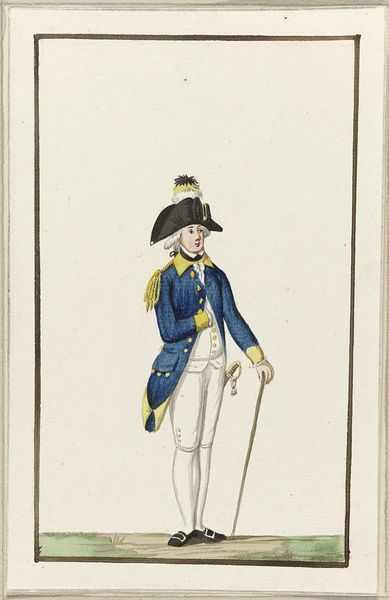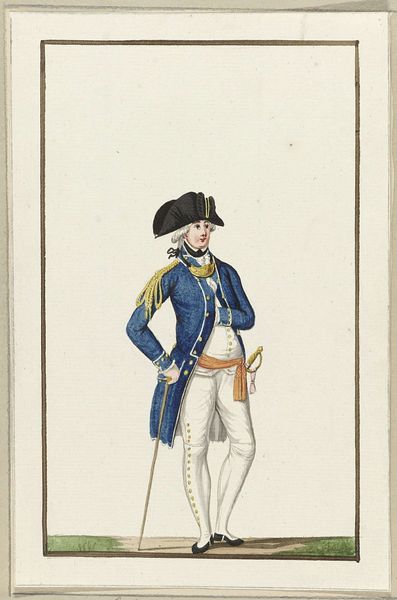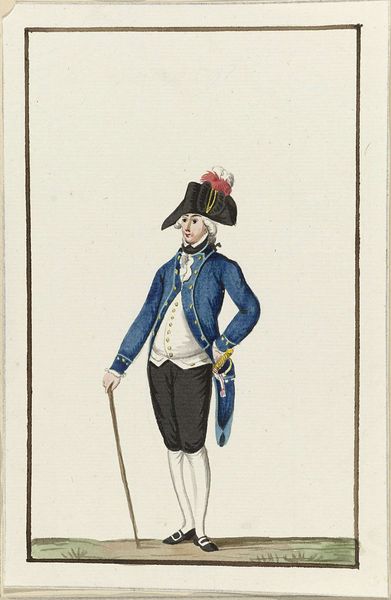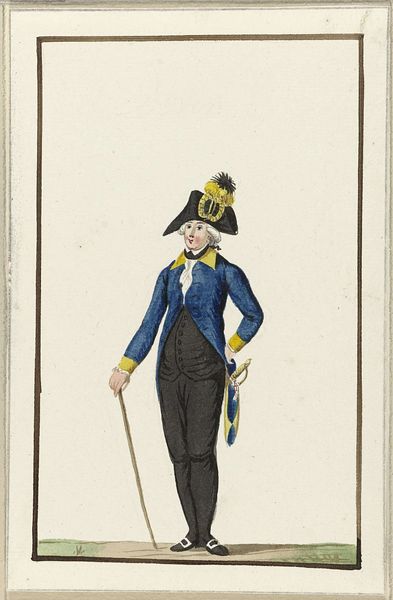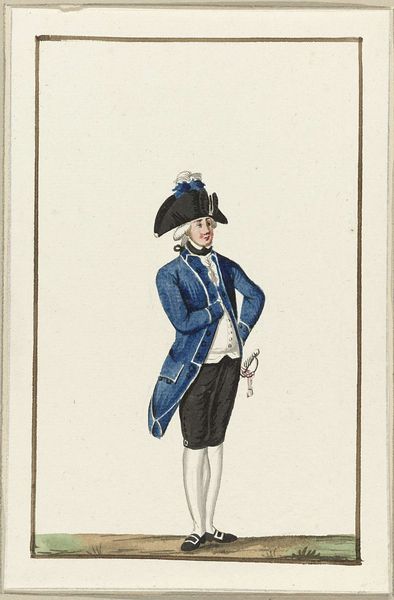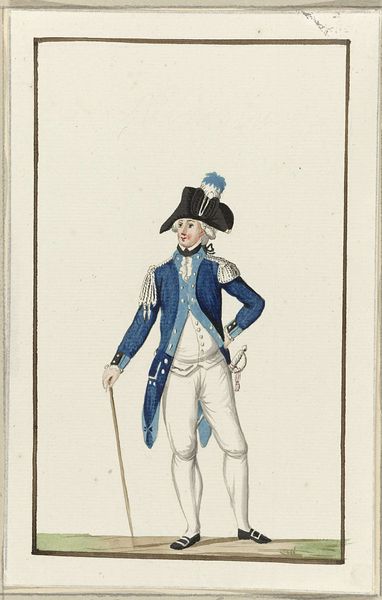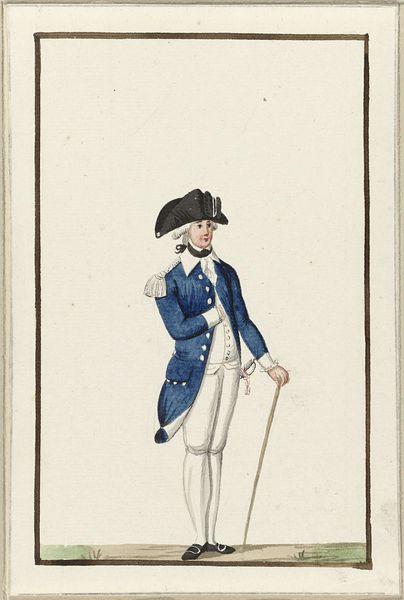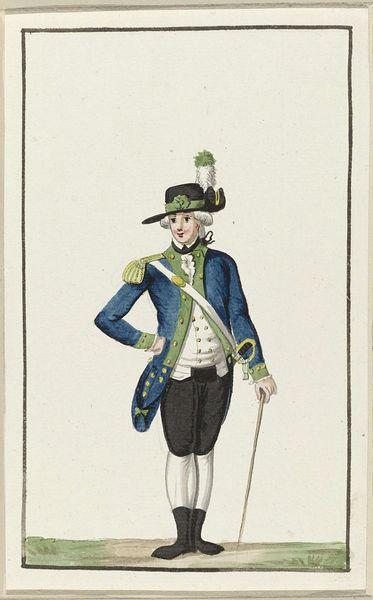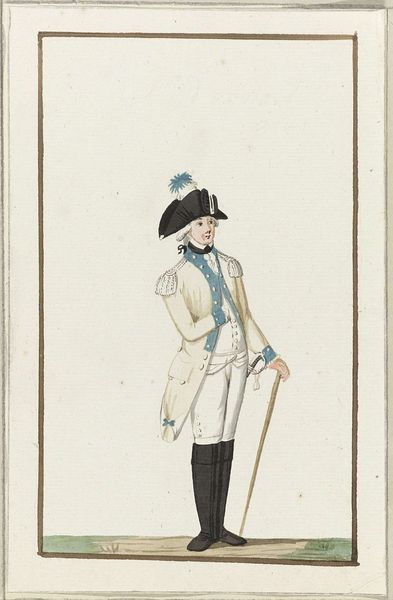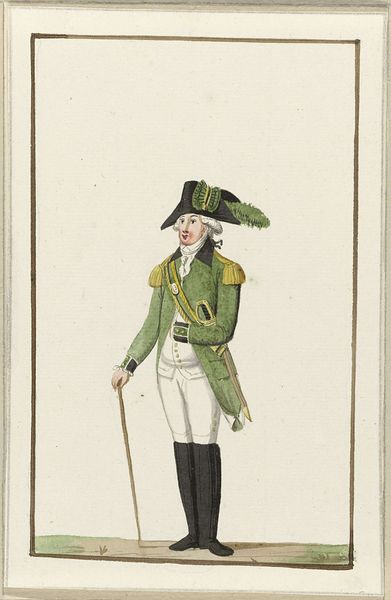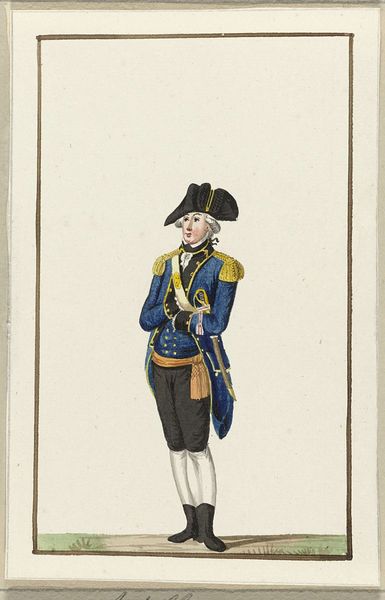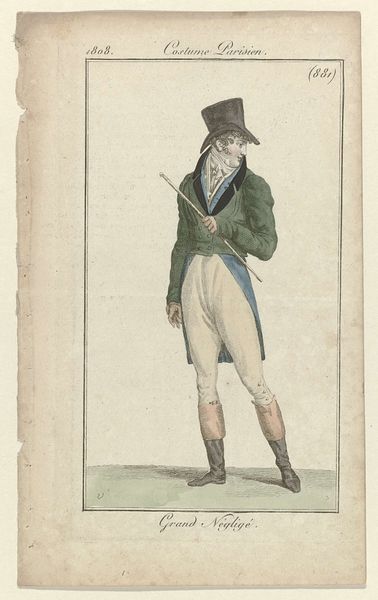
Dimensions: height 205 mm, width 135 mm
Copyright: Rijks Museum: Open Domain
Curator: Looking at this drawing titled "Montering van de schutterij van Schiedam", from around 1787, it feels incredibly formal, almost stilted. Editor: I see that, but it also exudes a strange confidence, a self-assuredness embedded in the very lines of the figure. It’s a romantic depiction, certainly, but tinged with something bordering on naive arrogance, don't you think? The high contrast and defined lines remind me a little of a caricature, perhaps reflecting the evolving politics of the late 18th century? Curator: Indeed, the uniform, rendered in watercolor, holds significant weight. Its color-coded details signal an official rank and affiliation. Notice how the feathered hat sits, its plumes speaking to power and prestige. This is not merely a man; it is the symbolic embodiment of Schiedam's civic defense. The way the sword is positioned suggests more a mark of status rather than for defense or violence, really. Editor: Right, but let's also look critically at who gets to perform this role, and by extension, who is being excluded from that power. The Schutterij, the civic guard, embodied a certain segment of society: propertied men. This portrait then isn’t merely descriptive, but a carefully constructed representation of a dominant social group and a reminder of their own agency, especially important as popular dissatisfaction with governance began to gain steam. Curator: Very true, the symbols act to solidify not just identity, but belonging. Look closely at the walking stick; it echoes the linear stance of the guard, reinforces stability, but does this stability indicate an inertia against societal upheaval? Perhaps its presence conveys both order and an unawareness of approaching change? Editor: Precisely! And isn't that telling in itself? These portraits functioned as assertions of power amid emerging political ferment. To overlook that sociopolitical tension and context would really be an oversight. The artwork itself is actively engaging in rhetoric. Curator: A good point well-made. It shows, that under closer examination, such imagery reveals the complicated relationship between personal presentation and political assertion at that crucial moment in European history. Editor: Exactly. Considering this now, my initial read has become more deeply contextualized, demonstrating, once again, that every line, shade, and detail tells more than just the first story you see at first glance.
Comments
No comments
Be the first to comment and join the conversation on the ultimate creative platform.
